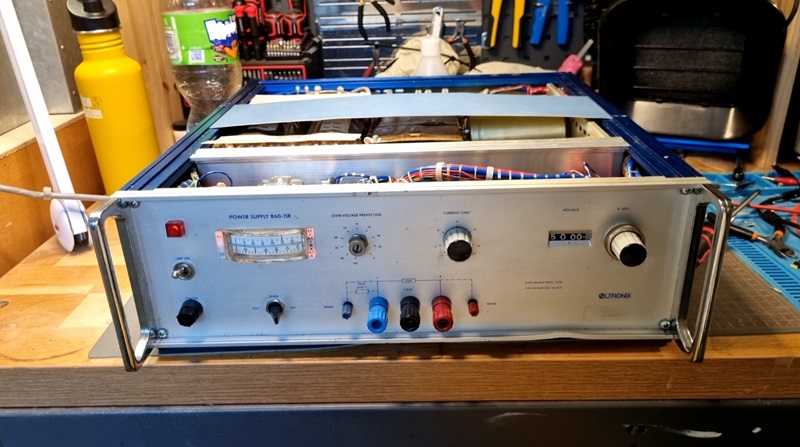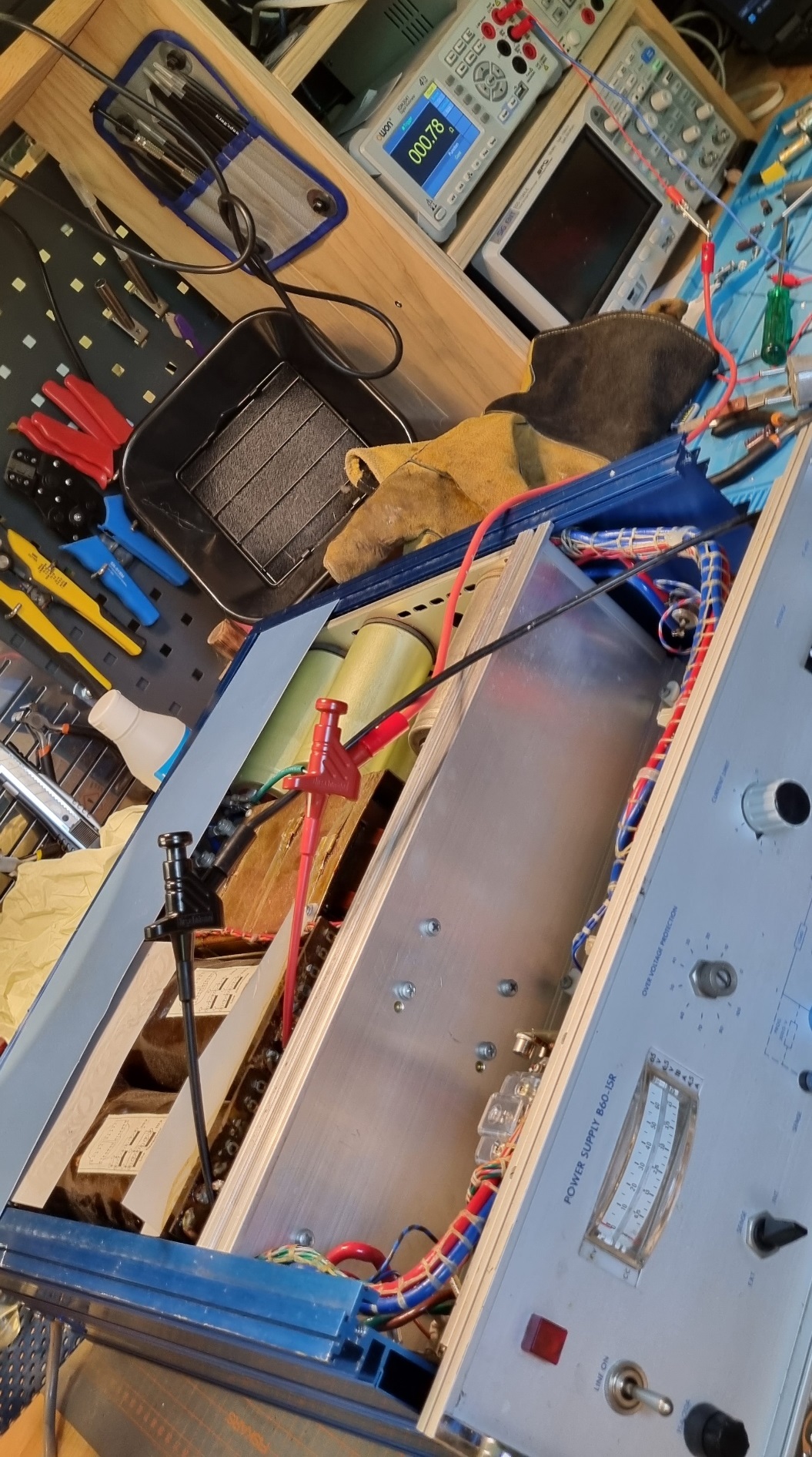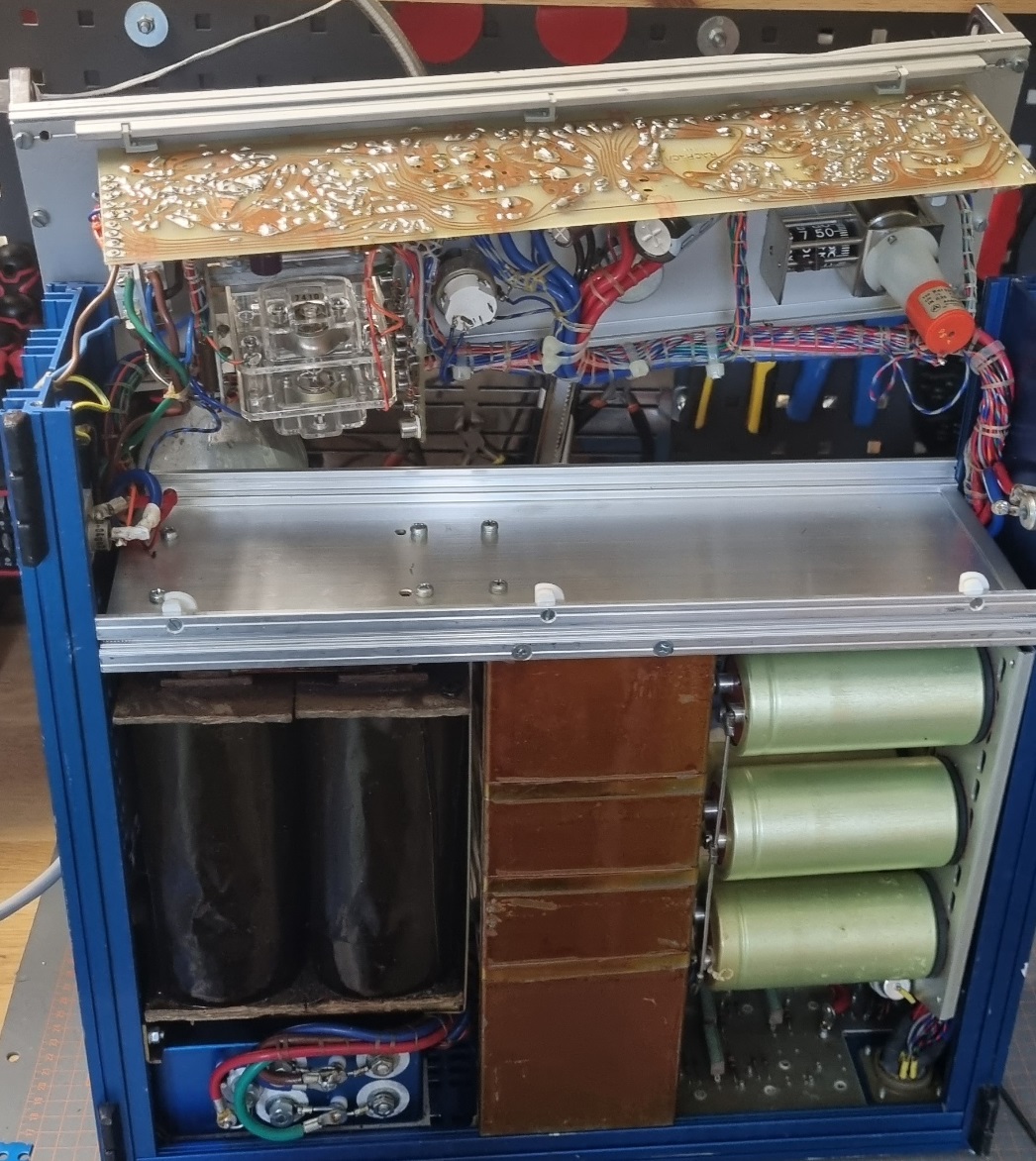Restoration of an old Oltronix power supply
Turning it on
I continued reassembling everything and flipped the main switch, and to my delight, it powered on immediately! After some initial testing—turning the knob and setting the sensing switch to internal—I cross-checked the output with my bench-voltmeter. It was off by about 200mV across most of the 0-60V range (though a few spots were further off). Still, for such an old, inexpensive find, it was more than usable! While this was done with no load, it showed a lot of promise.

However, during my next round of testing, things took a turn. I powered it off and back on, and... it tripped the breaker. Oops. I gave the supply a quick visual inspection, hoping to spot any obvious damage, like burn marks or charred components, but nothing stood out. I reset the breaker and tried again—same result. It seemed the power supply would need more attention to get it fully operational.
Feeling a bit discouraged, I took the supply apart for a deeper inspection, cleaning up any areas that were dusty, oily, or dirty. Again, nothing stood out as obviously wrong. Testing the main transformer's primary leads, I measured 0.78 ohms. That seemed a bit low, but given the size of the transformer, I figured it was just the winding resistance, which would likely increase under load.

Moving on to the primary board, I began testing components by desoldering one leg at a time. A few capacitors were way out of spec, so I temporarily swapped them for newer ones. Most of the diodes tested fine, showing a voltage drop of around 0.5V. Despite my efforts, nothing definitive turned up. I did notice a deep scratch on the main board's copper plane, which could potentially cause issues, but I wasn't convinced. I bridged the scratch with solder just in case—it almost looked as if someone had scored the board intentionally.
After all that, I reassembled everything. Realizing that using a 10A breaker might be contributing to the issue, I decided to switch to a 16A breaker instead. I plugged it in, powered it up, and—success! The supply started up without tripping the breaker or blowing the fuse. A small victory!
 In the picture above, you can see one of the two rows of the massive capacitor bank located in the bottom right corner.
In the picture above, you can see one of the two rows of the massive capacitor bank located in the bottom right corner.
[1]
An unexpected piece
2024-06-25 |
[2]
A first look
2024-06-26 |
[3]
Turning it on
2024-06-27 |
[4]
The Manual
2024-06-28 |
[5]
Leaky discovery
2024-07-06 |